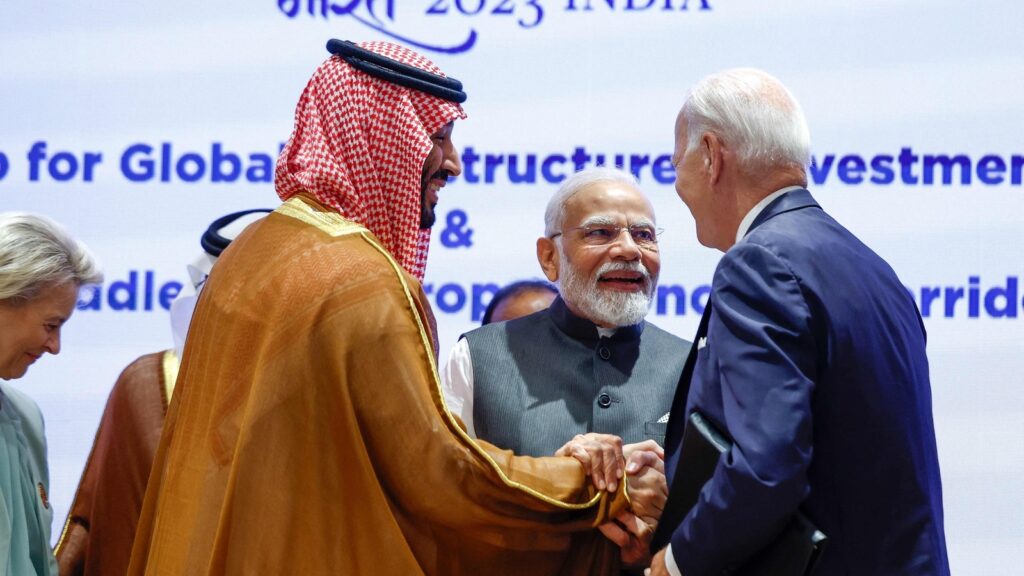It is time to get used to a new idea, and a new acronym, which is set to become a central dimension of India’s expanded foreign policy engagement in the coming years. IMEC, or the India-Middle East-Europe Economic Corridor, is the most ambitious multi-national and multi-regional geo-economic and geo-strategic project that India has ever signed on to. A rail and shipping corridor that will connect India to Europe through West Asia, it has the potential to deepen physical connectivity, unlock tremendous commercial opportunities, set new standards in infrastructure financing and development, and reshape global trading routes. But the logic of the project goes way beyond the economic case for it. IMEC is an attempt to show the world that China’s Belt and Road Initiative (BRI) isn’t the only game in town and, if countries so choose, they do have a choice when it comes to their development models.
India, the US, the European Union, France, Germany, Italy, the United Arab Emirates, and Saudi Arabia signed on to a memorandum of understanding on the sidelines of G20. Expect Israel to get on board if and when the Riyadh-Tel Aviv normalisation happens. IMEC has multiple objectives — linking the regions to commercial hubs, facilitating the development and export of clean energy, laying undersea grids, linking energy grids and telecommunication lines, expanding reliable access to electricity, and connecting communities to secure and stable Internet, among them. To be sure, the project is just at the stage of ideational conception: It will be years before the first tangible signs of the project become visible.
But that should not distract from both the reasons and consequences of IMEC. For the US, it is part of an effort to lower temperatures and enhance connectivity between adversarial and warring parties in West Asia and integrate India into the region. The project can help Delhi restore its historic connections to its west, in addition to its connectivity push in the east, possibly making India a physical hub beyond a diplomatic bridge. For both Delhi and DC, it is a way to fuse the collective strength of the grouping to counter China. For Saudi Arabia and UAE, this is an opportunity to integrate with the wider world at a time when they have to look beyond their fossil fuel-driven economic strength. The project will, of course, require huge resources, exemplary execution abilities, and a complex institutional mechanism. But for its sheer vision and ambition, IMEC deserves to be applauded.
Embrace independence with quality journalism
Save on HT + The Economist subscription


